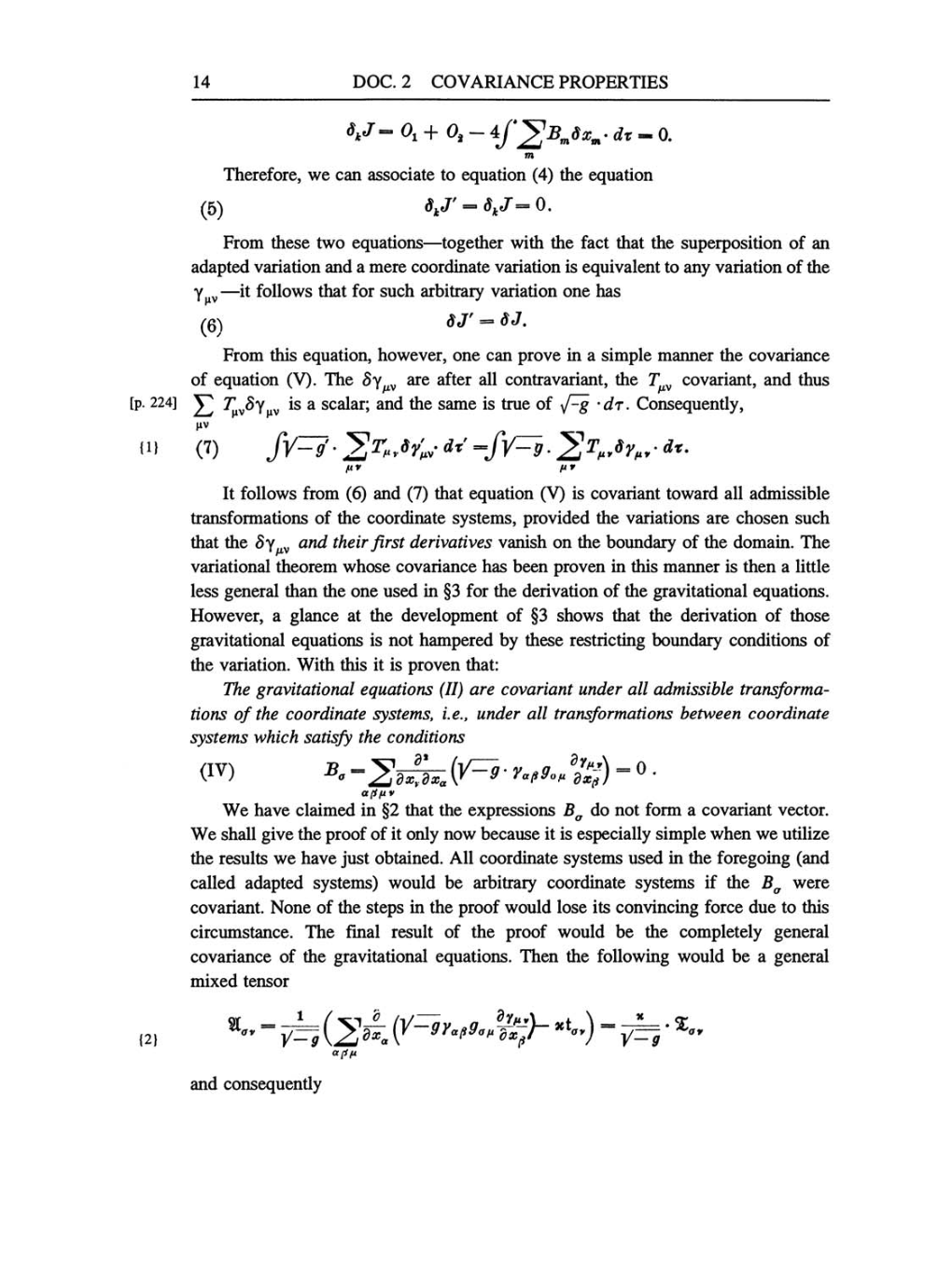14
DOC. 2 COVARIANCE PROPERTIES
8kJ
-
+
O1
-
4j
^BmSxm•
dr
-
0.
m
Therefore,
we can
associate
to
equation
(4)
the
equation
(5)
SkJ'
=
SkJ= 0.
From these
two equations-together
with the fact that the
superposition
of
an
adapted
variation and
a mere
coordinate variation is
equivalent to
any
variation
of
the
yuv-it
follows that for such
arbitrary
variation
one
has
(6)
SJ'
=
SJ.
From this
equation, however,
one can prove
in
a simple manner
the covariance
of
equation (V).
The
Syuv
are
after all
contravariant,
the
Tuv covariant,
and thus
[p. 224]
ETuvSyuv
is
a
scalar;
and the
same
is
true
of
-g
.dr.
Consequently,
{1}
(7)
fv11?--fV-d^T^Yv'dt.fiVf.iv
It follows from
(6)
and
(7)
that
equation (V)
is covariant toward all admissible
transformations of the coordinate
systems, provided
the variations
are
chosen such
that the
Syuv
and
their
first
derivatives vanish
on
the
boundary
of the domain.
The
variational theorem whose covariance has been
proven
in this
manner
is then
a
little
less
general
than the
one
used in
§3
for the derivation of the
gravitational equations.
However,
a
glance
at the
development
of
§3
shows that the derivation
of
those
gravitational equations
is
not
hampered by
these
restricting boundary
conditions
of
the variation. With this it is
proven
that:
The gravitational
equations
(II) are
covariant under
all
admissible
transforma-
tions of
the
coordinate
systems,
i.e.,
under
all
transformations
between coordinate
systems
which
satisfy
the conditions
(IV)
a[ifiv
-g.YaBMv)
=
0.
We have claimed
in
§2
that the
expressions
Ba
do
not
form
a
covariant
vector.
We shall
give
the
proof
of
it
only
now
because it
is
especially simple
when
we
utilize
the results
we
have
just
obtained.
All coordinate
systems
used in the
foregoing
(and
called
adapted systems)
would be
arbitrary
coordinate
systems
if
the
Ba
were
covariant.
None of the
steps
in the
proof
would lose its
convincing
force due
to
this
circumstance.
The final result of the
proof
would be the
completely
general
covariance of the
gravitational
equations.
Then the
following
would be
a
general
mixed
tensor
{2}
=
yT=g
(2$*.
xtar)
=
'%ar
apfi
and
consequently
